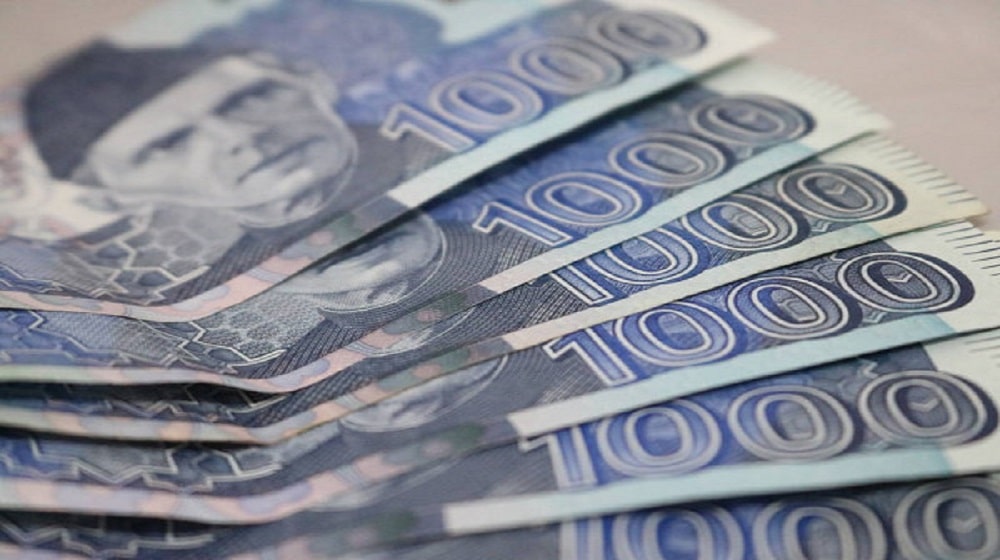Despite a slowdown in development spending and double-digit income growth, Pakistan’s fiscal budget deficit in the first half of the current financial year reached Rs. 1.8 trillion, up by 29 percent from the same period last year, reported Express Tribune.
The budget deficit — which is the difference between federal income and expenditures — was tentatively estimated at Rs. 1.8 trillion, or 3.3 percent of GDP, for the current fiscal year’s July-December period. Now, due to the reconciliation of development expenditure numbers, projections have fluctuated considerably.
Provisional numbers suggest that current expenditures accounted for 92 percent of total federal government spending, with 40 percent of that amount spent on interest expenses. In the first half of the current fiscal year, federal development spending stood at Rs. 274 billion, up from the same period last year but only accounting for 30 percent of the yearly budget of Rs. 900 billion.
In November, Finance Minister Shaukat Tarin announced that the Public Sector Development Program (PSDP) would be reduced by Rs. 200 billion in order to lower appropriations and rationalize spending. Comparatively, investments for development projects increased by 18 percent (Rs. 42 billion) in the same period last year, which was not in accordance with the annual budget.
To recall, the first half of the previous fiscal year observed an initial deficit forecast to be roughly Rs. 1.4 trillion, or 3.1 percent of the country’s GDP. This fiscal year, the budget deficit target is Rs. 4 trillion.
The increase in current expenditures is a major contributor to the increase since the government spent less under the Public Sector Development Programme to meet a condition of the International Monetary Fund (IMF) loan program.
Tax ‘Hedge’ Against Current Expenditure
Since the majority of taxes collected by the Federal Board of Revenue (FBR) were transferred to the provincial treasuries, the provisional fiscal data suggests the government’s approach to managing the growing public debt by concentrating efforts on unorthodox revenue support reforms may not help in any conceivable way.
Despite strong tax collection by the tax machinery, the gap between federal income and expenditure widened. In the first half of the current fiscal year, tax collections jumped by over a third to Rs. 2.92 trillion, owing to stronger collections at the import stage.
The FBR’s gains, however, were countered by a nearly 17 percent drop in non-tax revenues. In the first half of the ongoing fiscal year, non-tax revenue totaled Rs. 720 billion, down Rs. 142 billion year-on-year. The collection of non-tax revenue was just 35 percent of the annual objective of Rs. 2.1 trillion.
The government’s gross federal revenue receipts increased by 18 percent to Rs. 3.68 trillion. However, after giving provinces their part of the National Finance Commission award of Rs. 1.7 trillion, the federal government’s net revenue was just Rs. 1.95 trillion.
Due to excessive current expenditures that were nibbling through tax receipts, the federal government’s total expenditures reached Rs. 3.75 trillion, more than double the allocated net government revenues.
Throughout the first half of the current fiscal year, current expenditures totaled Rs. 3.5 trillion, up 18 percent or Rs. 520 billion. Interest payments totaled Rs. 1.4 trillion, a modest decrease from the previous year, but still accounting for 72 percent of the government’s net revenues.
Defense spending increased by almost 5 percent in the first half of the current fiscal year to Rs. 514 billion, accounting for another 26 percent of the government’s net revenues.
The federal budget deficit was Rs. 402 billion in the first half of the ongoing fiscal year, compared to a surplus of Rs. 82 billion in the same period last year. After compensating for the Rs. 480 billion provincial cash surplus in the first half, the entire budget deficit was estimated to be Rs. 1.32 trillion, or 2.5 percent of GDP.
Quite understandably so, the government imposed an Rs. 360 billion supplementary budget by levying a 17 percent sales tax on more than 140 items. However, because of the proportionate increase in the share of provinces and greater debt servicing, additional prospectus revenues may be lost owing to the central bank’s potential interest rate hikes closer to double digits in the coming months.


























This government is clueless. Unfortunately, we are stuck with incompetence or corruption.G